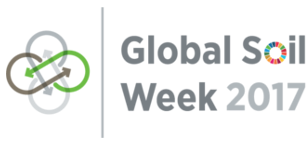Ivonne Lobos Alva
Abstract:
Soil and land resources will very likely form part of the final set of Rio+20 Sustainable Development Goals (SDGs), as an individual SDG or as a target under a goal for food security and sustainable agriculture, which has created momentum to initiate discussions on the need to develop clear indicators; on necessary implementation mechanisms; on supporting governance instruments; and on the role of public participation. Guatemala makes for an interesting case study in this regard as it was one of the first two countries to support the proposal to create the SDGs and at the same time faces some of the biggest challenges in the region in terms of food security, inequality of land distribution, poverty and overcoming the effects of a 36‐year long civil war. The lessons learned from implementing the Millennium Development Goals (MDGs), a similar process to set and implement global goals
reaching their target date in 2015, have provided a framework which can help guide the process of design and implementation of SDGs in terms of soil and land resources. These lessons include the need for tailored indicators that respond to the different meanings attached to soil and land resources, a domestication of targets and indicators into national policies and programs, the inclusion of relevant stakeholders to jumpstart changes in behaviors, and the introduction of an open dialogue with all concerned groups that can lead to common strategies and solutions.

